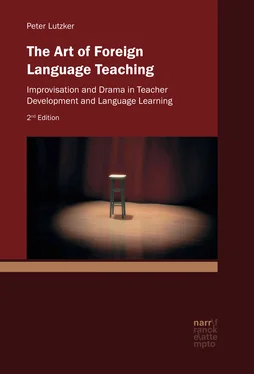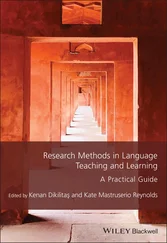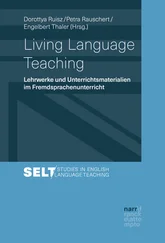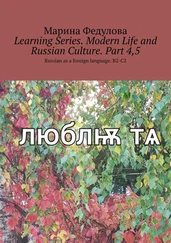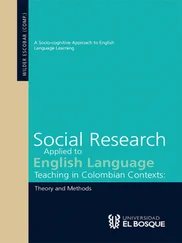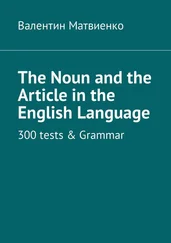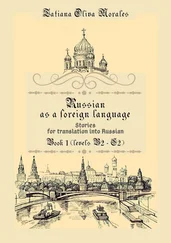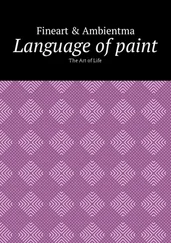At the same time, it has become increasingly clear that this approach to teacher education raises a number of crucial questions and issues. Although both feedback sessions and written evaluations can be revealing with respect to what participants directly experience in such workshops, the decisive question of what this will later come to mean for them remains unanswered. Thus, a primary task of this study will be to assess for the first time the long-term effects and value of these courses. Moreover, while articles have been published describing different elements of the programs, there have been no previous attempts to develop a broad conceptual basis for the inclusion of these courses in teacher training. Hence, a further deficit that I will attempt to redress with my work is the absence of a detailed study exploring and discussing the arguments for incorporating this form of artistic work into in-service language teacher development. Both within the framework of Steiner Schools and with respect to establishing a constructive basis for dialogue with educators outside of Steiner education, it has become increasingly important to address these issues.
Understanding the potential implications of considering teaching as an art requires a closer examination of the ways in which teaching has been viewed in the past and how it is viewed today. The first chapter will thus address this topic within an historical and a contemporary framework. The second chapter examines relevant issues concerning teacher education and focuses on different approaches which have been developed in the context of in-service language teacher education. The following chapters (3 to 6) first explore the conceptual and experiential basis of having teachers work with professional performing artists and then focus extensively on Vivian Gladwell’s clowning and improvisation courses in the framework of a qualitative research study. Workshops for language teachers which Mr. Gladwell has given in different contexts over the last decade in England, Germany, and Finland, present the empirical basis for this study. What the participants of these workshops wrote in response to my research inquiry is considered in Chapter 7, leading to a detailed discussion of these courses in Chapter 8. In this context the perspectives of a number of contemporary educators are also considered. The final chapter in the first section, Chapter 9, draws conclusions from the empirical study and addresses possible future areas of research.
In the second section of this study the focus shifts from language teacher development to language learning. The concept of foreign language teaching as an art is examined with respect to its implications for pupils learning a foreign language in high school. The process of rehearsing and performing a full-length foreign language play in a 10 thgrade presents the basis for empirical research within the specific framework of a case study. This research is based to a substantial degree on what pupils themselves reported, as well as on what their parents and teachers wrote. As I was the teacher of this class, this study was conducted from the standpoint of practitioner-based research.
Although there now exists an impressive body of literature regarding the use of drama techniques in language learning, many of the key works in this field are more directly concerned with adult education, either in regard to teaching English as a second language or in university programs.20 In evaluating the use of drama in the context of high school foreign language lessons, there has been a widely acknowledged lack of empirical research studies.21 This is particularly the case with respect to performance drama.22 The unusual dimensions which such plays have in the curriculum of the school in which I teach – involving an entire class of up to 40 pupils for six months – offers a unique opportunity to examine such processes. There has, to my knowledge, been no comparable research conducted examining the effects of such intensive, dramatic work in a foreign language. This clearly highlights the need for studies designed to evaluate its potential value.
The second section is divided into eight chapters. In Chapter 10, after an historical overview of the use of drama in foreign language teaching, relevant contemporary developments are discussed, thus placing this case study within a larger contextual framework. The next two chapters (11 and 12) present an overview of the research goals and methods and give the necessary background information concerning the particular circumstances in which the work took place. In Chapter 13 the entire process of rehearsing and performing the play is examined from a cross-sectional, chronological perspective, primarily based on what the pupils wrote over the course of six months, but also including observations and comments made by their parents and teachers. Chapter 14 traces the development of five pupils in depth. In Chapter 15, the pupils’ experiences are first viewed in the light of recent neurological research and then connections to relevant educational approaches are drawn. In this context the writings of a broad range of scientists and educators are also considered. Chapter 16 elucidates conclusions which can be drawn from this study both with respect to foreign language learning as well as in considering the overriding goals of a high school education. In the final chapter, the decisive elements of a concept of foreign language teaching as an art, encompassing both teacher education and language learning are elaborated.
In consulting the relevant literature, I have drawn equally on German and Anglo-American research and writings. This has meant addressing issues in teacher education and foreign language learning within both an Anglo-American and a European framework. Being able to base this study on the insights of leading figures from different educational traditions has had incontrovertible advantages. At the same time, this larger perspective precludes both a complete accessing of all the possibly relevant material within each single context, as well as an exclusive focusing on all the pertinent issues connected to a specific national situation. In conducting this study, the advantages of adopting an international view have clearly proved to outweigh the disadvantages particularly insofar as many crucial issues share a common basis in the primary acts of teaching and learning a foreign language.
The multiple perspectives which have been adopted here, focusing on the fields of both teacher education and foreign language learning while drawing extensively on different educational traditions, can also be seen to have autobiographical roots. As an American who has been teaching English in Germany and training English teachers in Europe for many years, I have always found the mixture and integration of these different standpoints to be a continual source of stimulation and inspiration. Thus, it seems natural and, in fact, inevitable to attempt to incorporate these different perspectives into this study. Although my own work as a foreign language teacher has occurred solely within the context of having taught English in Steiner schools in Germany, my work as a teacher trainer in Waldorf education has been conducted within a much broader European framework. Having trained foreign language teachers in seminars and courses over the last decade in Germany, Hungary, Russia, Sweden, Switzerland and England, has given me a larger and richer perspective on critical issues in European teacher education which I have attempted to integrate into this study.
In considering foreign language teaching as an art, this study will examine a concept that in fundamental respects constitutes an alternative approach to most contemporary educational views. Nevertheless, it is an idea which is both deeply rooted in a long historical tradition, as well as strongly influenced by research and thinking in a number of related fields including the behavioural sciences, neurology, philosophy and the dramatic arts. Thus, a vital dimension of this work has been the incorporation of a wide range of perspectives and writings in exploring the far-ranging implications of this concept. This has necessarily led to the adoption of an interdisciplinary approach in which extensive connections to writings in a number of fields are drawn. At the same time, the particular value of this study is seen to lie in its also being based on the concrete experiences of teachers and pupils. Substantial portions of this work consist of what they said and wrote which then provides a broad empirical basis for discussion and evaluation. In the end, I remain convinced that it is through deeply considering the actual reports of pupils and teachers that educational research can make contributions of lasting value to teaching and learning.
Читать дальше
